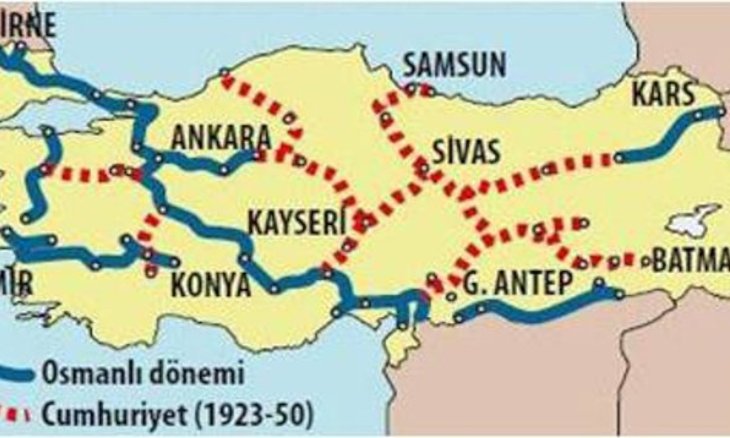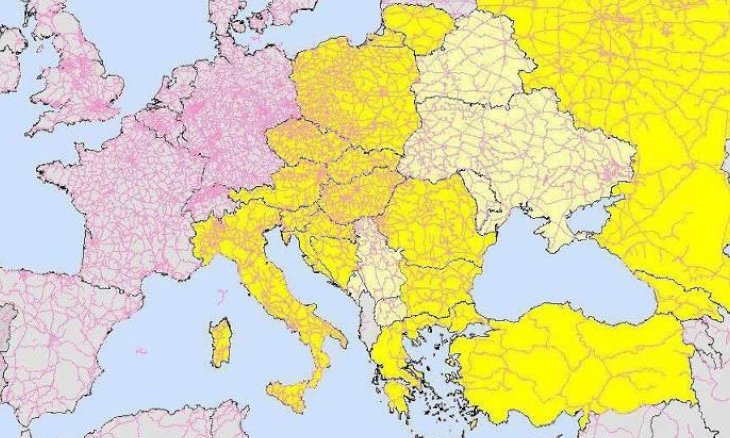The Haydarpaşa train station should remain a station
Upon Ekrem Imamoğlu's victory at the Istanbul mayoral elections, I had predicted that the one-man regime would start hampering local administrations. That is precisely what is happening now. While the government invited bidding firms to two rounds of negotiations for the unused, empty spaces and warehouses of the Haydarpaşa and Sirkeci train stations, it did not invite the Istanbul Municipality to the second round.
Upon Ekrem Imamoğlu's victory in the Istanbul mayoral elections, I had predicted in a column that the one-man regime would start hampering local administrations. That is precisely what is happening now.
While the government invited bidding firms to two rounds of negotiations for the unused, empty spaces and warehouses of the Haydarpaşa and Sirkeci train stations, it did not invite the Istanbul Municipality to the second round. The right to use the spaces for non-commercial purposes was awarded to the Hezarfen Consultancy firm for the monthly price of 350,000 Turkish lira. The owner of this company is none of other than Hüseyin Avni Önder, a former employee of the Istanbul Municipality who has close ties to the Minister of Transportation and Infrastructure, and briefly served as the president of the pro-government Archers Foundation.
Istanbul mayor Ekrem Imamoğlu has stated his intention to take all necessary action to prevent this deal; I doubt there is much he can do. These days, even the most basic bidding processes are shady.
Overlooking the Marmara Sea in the historical peninsula and the trendy area of Kadıköy, the Haydarpaşa station is located in an ideal spot. Besides, it is at the heart of the newly up-and-coming Yeldeğirmeni neighborhood, which is attracting a growing number of cafes and art centers.
In 2012, due to the construction of a high-speed train line (YHT), it was said the Haydarpaşa station would be closed down for two years and refurbishment works would be undertaken during that time. A temporary station was then built to the west in the neighborhood of Pendik, and a line was extended closer to Kadıköy at Söğütlüçesme. In the meantime, the Haydarpaşa building remains unused. In the past, iconic trains like the Eastern Express, Capital Express, Fatih Express, and Kurtalan Express started their journeys from Haydarpaşa using seven railways and four platforms. Had these conventional train routes been preserved, the railroad connection to Anatolia would not have been severed.
Later, some began making the point that the station sat on valuable land and could be turned into a hotel and yacht port where cruise ships could dock, while the remaining space could be used for skyscrapers and residential towers. The public mobilized and prevented this from happening. Though that might be temporary.
Seven years later, the restoration of the station is not yet complete and contrary to what had been promised, it has yet to be opened for service. We now hear the station's unused and empty spaces will be used to host public events. While it would seem right for land belonging to a state institution (The Turkish Republic State Railroads, or TCDD) to be passed onto another state institution like the Metropolitan Municipality of Istanbul (IBB), a dubious company was instead granted control of parts of the Haydarpaşa Station.
Unfortunately, this is not the first time this happens.
Istanbul's iconic Atatürk Cultural Center (AKM) was closed down under the pretext that it was not earthquake-resilient. Authorities planned to demolish it to raise an alternative Baroque-style cultural center in its place. It was then said the center would remain and merely undergo restoration, but it was emptied and left to decay. Later still, Murat Tabanlıoğlu, an architect and the son of the emblematic Turkish architect Hayati Tabanlıoğlu, was conferred responsibility to take care of it. The building has since been demolished. No one knows what will happen to it.
Each time I disembark from the Kadıköy ferry, my hearts sinks as I see a storied tobacco warehouse now turned into a five-star hotel. I feel like what used to be mine has been taken away from me.
As for Istanbul's Metrobus, authorities originally announced the system would only be used temporarily and for emergency purposes. Today, it has become no less than a living hell as people who are completely cramped on their journeys.
Railroad or highway?
The map below shows the railroad network established during the Ottoman era and its further development up until the 1950s. The objective was to create a domestic market with an integrated railroad network while also being open to the world through the ports. The Haydarpaşa Station was the point from which all parts of Anatolia reached Istanbul, or conversely, the point from which Istanbul reached all corners of Anatolia.

In the 1950s, Turkey relinquished this policy in favor of oil and energy-based modes of transport. "Symbols of modernization" like highways, double-lane roads and automobiles took over the country. Today, the same policies that sent the country into an energy bottleneck 70 years ago continue to be implemented.

The map above compares today's railroad networks in Europe and Turkey. In Europe, most towns and cities have train stations either from the 19th century or from the contemporary era. Every station is an entrance gate into the town. While old, they were not abandoned. Instead, they were integrated into the railroad networks.
While the Justice and Development party (AKP) has presided over the construction of many new transport systems in the past 18 years, including double roads, high-speed trains, the Marmaray, the Metrobus and several metro lines, it failed to interconnect these. I cannot deny their convenience. Still, the endless stairs and escalators one must use to connect between them at stations cannot be considered as proper modernization.
This is all a matter of priority. Had transportation in Istanbul been approached differently, its residents could have been travelling in pleasant conditions, and we could still have been using Haydarpaşa.

